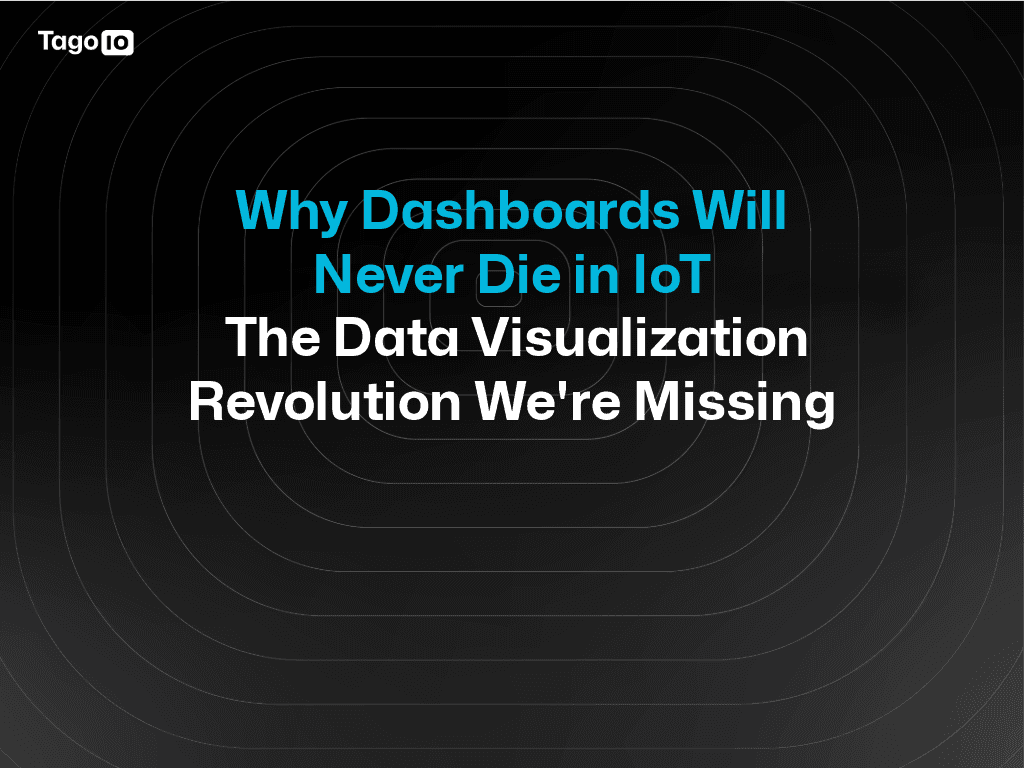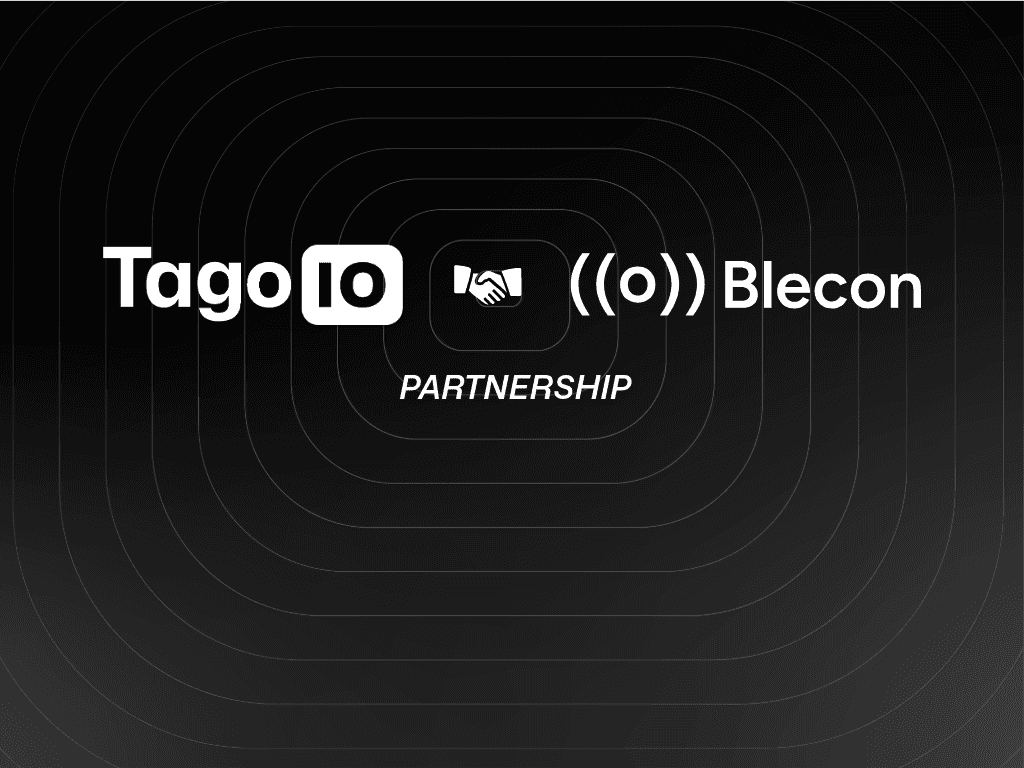Blog
Tech Insigths
The Hidden ROI of Connected Equipment: Revenue Streams Most Manufacturers Miss
The hidden ROI from IoT lies in new revenue opportunities, data monetization, customer loyalty, and value-added services.

TagoIO Team
Apr 30, 2025



In our experience working with manufacturers who are just beginning their IoT journey, one of the most common questions we hear is: "How do we justify the cost of implementing IoT?" It's a fair question—especially when the initial investment in sensors, connectivity, platforms, and integration can seem high without an obvious near-term return. What we've learned, though, is that the real value of IoT often goes far beyond cost savings or operational efficiency. In fact, many of the most impactful benefits show up as new revenue opportunities that aren’t always visible at first.
As the industrial landscape accelerates toward digital transformation, connected equipment—often referred to as Industrial IoT (IIoT) devices—has become increasingly prevalent in manufacturing. While most companies understand the surface-level benefits of connected equipment (like real-time monitoring or predictive maintenance), there are deeper, often overlooked revenue streams that can transform business models and unlock significant long-term return on investment (ROI).
In the recent book Fusion Strategy, Venkat Venkatraman illustrates how companies in traditional sectors can reimagine their competitive edge by blending their physical products with digital capabilities. While much of the focus in IoT discussions often leans toward heavy industries like oil, mining, or automotive, Fusion Strategy offers critical insights that apply directly to light industries as well—where the structure and scale are smaller, but the agility and customer proximity are often greater.
For light industry manufacturers, IoT enables a tighter feedback loop between product usage and product development. For example, connected devices like smart kitchen appliances or packaging sensors can stream real-time usage data, revealing how products are actually used, under what conditions, and what features customers truly value. This not only improves product design but also helps companies innovate faster and more precisely.
Venkatraman also emphasizes how IoT helps firms in light industry shift from transaction-based to relationship-based models. A packaging manufacturer, for instance, can evolve from simply selling cartons to providing intelligent packaging solutions with embedded sensors that monitor freshness or tampering. In doing so, the business moves from commodity sales to value-added services like data insights, shelf-life tracking, and regulatory compliance. With connected systems and smart machines, factories can self-adjust to small batch runs, enable condition-based maintenance, and minimize downtime—vital in sectors where margins are thin and agility is key.
Let's explore these hidden revenue streams, and why selecting a flexible, scalable platform like TagoIO is essential to unlocking their full potential.
Beyond Downtime Reduction: The Broader Benefits of Connectivity
Connected equipment is most commonly justified on the basis of cost savings—reduced downtime, predictive maintenance, and optimized asset utilization. However, manufacturers who stop there are leaving money on the table. The hidden ROI lies in new revenue opportunities, data monetization, customer loyalty, and value-added services.
Let’s unpack these hidden streams:
1. Data-Driven Service Contracts (Product-as-a-Service)
Connected devices provide visibility into usage patterns and performance metrics, enabling manufacturers to shift from traditional one-time sales to recurring revenue models like Equipment-as-a-Service (EaaS).
Example Use Case: A compressor manufacturer can use real-time usage data to bill customers based on operating hours, pressure levels, or output efficiency. This model lowers the barrier to entry for customers and creates a predictable, ongoing revenue stream for the OEM.
ROI Impact: Stable recurring income, better customer retention, and ongoing upselling opportunities. From equipment sales to a usage-based recurring revenue model, which also improves customer loyalty and reduces capex barriers for clients.
2. Advanced Analytics for Upselling and Cross-Selling
By analyzing usage data, manufacturers can identify when a customer is likely to need a consumable, upgrade, or service.
Example Use Cases: If a machine shows frequent peak-load operation, you can offer a more powerful model or cooling add-ons. Alternatively, wear-and-tear patterns might indicate a need for lubricant or replacement parts. Another example is from insights created by connected equipment helping a farming equipment manufacturer to understand individual farmer needs and tailor recommendations, thereby increasing customer spend per unit.
ROI Impact: Improved customer experience and higher average customer lifetime value (CLTV). Increased sales of attachments, software licenses, and subscriptions to data analytics services.
3. Warranty Risk Reduction and Fraud Prevention
By tracking real-time usage and performance, manufacturers can verify warranty claims and adjust warranty terms based on how the equipment is actually used.
Example Use Case: A customer claims a warranty repair, but telemetry data shows the equipment was used outside the recommended operating parameters. This data avoids costly repairs and supports tiered warranty pricing based on usage behavior.
ROI Impact: Reduced warranty claim costs, smarter risk management. By validating real warranty claims and identifying misuse or overuse, companies can significantly reduce fraudulent claims and tailors warranty offerings based on actual usage profiles.
4. Benchmarking and Performance Insights
Aggregate anonymized data from multiple installations allows manufacturers to identify how their machines perform across industries or geographies.
Example Use Case: If data reveals that machines in colder climates experience fewer issues, this insight can inform both R&D and marketing. You can also offer performance benchmarking reports as a premium service to customers.
ROI Impact: Better product design, targeted innovation, and premium services based on insights.
5. Regulatory and Compliance Services
Certain industries (like food processing, pharmaceuticals, or energy) have strict compliance requirements. Connected equipment can generate automated compliance reports.
Use Case: Instead of manually checking for temperature compliance in a cold chain, connected sensors provide logs that can be audited anytime—reducing the burden on your customer and opening up the potential to charge for reporting services. Data can be continuously uploaded to the cloud and used to generate automated compliance reports for regulations like FDA 21 CFR Part 11.
ROI Impact: Competitive differentiation and added value for customers in regulated markets. In industries where regulatory non-compliance can mean lost product or fines, this model provides essential value and creates recurring data service revenue.
Why Platform Choice Matters: Unlocking Value with TagoIO
All of these revenue streams rely on turning raw data into actionable intelligence—and that depends on your IoT application platform. This is where a platform like TagoIO becomes a strategic advantage rather than just a technical component.
Rapid Development of Scalable Applications
TagoIO’s low-code environment allows teams to build fully customized dashboards, alerts, and workflows without extensive development cycles. This agility is critical for rapidly deploying new service offerings tied to your connected equipment. And you scale, you can always add sophisticated and powerful scripts to dig into data to identify trends and recommendations.
Secure Multi-Tenant Management
Offer your customers individualized dashboards, white-labeled portals, or tiered access levels. TagoIO enables secure multi-tenant deployment out of the box—perfect for scaling your connected services business.
Advanced Data Analysis and Automation
With native support for real-time analytics, triggers, geofencing, and integrations (via REST APIs, MQTT), TagoIO helps you convert raw sensor data into meaningful business actions—exactly what’s needed to drive those hidden ROI areas.
Seamless Integration with Cellular and LPWAN Devices
Whether you’re using NB-IoT, LTE-M, CAT-M1, or LoRaWAN-connected equipment, TagoIO provides plug-and-play integration with major network providers and device manufacturers, accelerating your time to market.
Conclusion: Hidden ROI Requires Strategic Thinking
Most manufacturers are still underestimating the potential of connected equipment. The ROI is not just in efficiency or cost savings—it's in the opportunity to transform your business model, differentiate your offerings, and deepen customer relationships.
But to access these benefits, the right IoT platform is non-negotiable. Solutions like TagoIO give manufacturers the tools they need to build powerful, data-driven services that unlock new revenue streams and long-term competitive advantage.
Now’s the time to stop viewing connected equipment as a cost center—and start treating it as a profit engine. Now, anyone can start building a complete IoT solutions using one of our templates.

TagoIO Team


